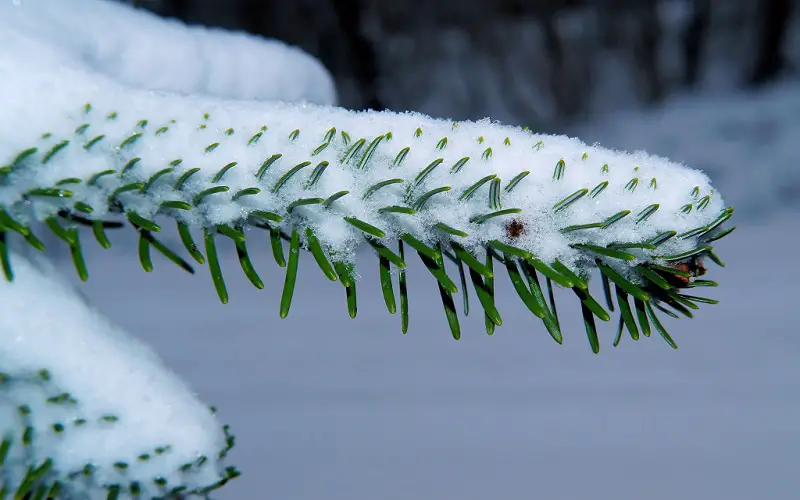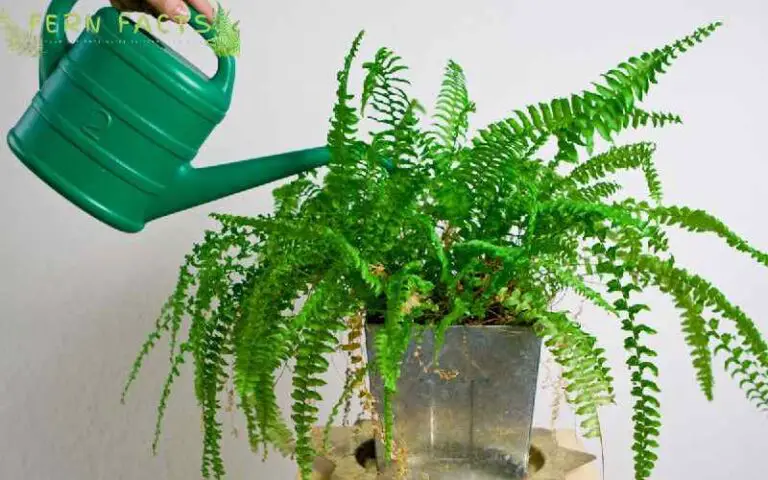What to Do if Your Fern Freezes
Ferns can be vulnerable to cold and frozen seasons where they can die in some extreme frozen weather.
So if you are a fern owner and don’t have any idea what to do if your ferns get frozen because of extreme cold weather, then this article will guide you throughout the way.
So, in this article, I’ll provide you with some guidelines for potted ferns recovering, container pots recovering and outdoor ferns recovering where you can regain your frozen ferns.
So let’s start with the guidelines.

What You’ll Do if Your Ferns Freeze
Some ferns have the power to tolerate the winter cold. But sometimes bad weather or extremely cold weather can freeze out your ferns. However, you can recover your ferns if their roots and rhizomes are healthy.
If you observe their roots and rhizomes are not dead yet then you have a chance to save your ferns. Therefore you need to observe your ferns thoroughly before winter arrives.
How to Recover Your Ferns Frozen Ferns
To recover your frozen ferns you need to supervise and look out for which ferns get frozen and have extremely vulnerable situations.
Recovering Potted Ferns
If your ferns are outside in small pots or hanging pots, they can be vulnerable during winter seasons due to extreme cold weather. In such cases, you need to move your ferns.
You can place them in shelter places like a porch or garage. These types of places can be good options to keep your ferns warm and save them from an extremely cold environment.
After relocating them, you have to water them which can be beneficial in two ways because it can gently thaw any frozen soil and give instant hydration to recover.
Additionally, it is very important to water them because freezing can dehydrate ferns. That’s why you need to water them after relocating them.
Remember, you need to have patience while recovering your ferns. You may have thought of pruning or feeding your ferns for their healthy growth, however, you have to make them survive rather than thrive during this weather.
You need to wait for a couple of weeks, thoroughly observing them whether the situation gets worse or not. Moreover, you can also wrap them with plastic or burlap while ensuring their roots are well protected.
Once you have fully confident that your ferns are well stable then you can cut off their dead, brown, and damaged fronds. For further check, you can slide the root ball out of the pots and verify the current state of their roots.
If you find roots becoming dark, mushy, and soft then you can detach the fresh roots from the damaged roots to prevent bacterial infection.
Then you can report them with potting soil mix but ignore mixing fertilizer because there can be too many chemicals at that time which they might be handled. Later on, water them to keep them hydrated.
Recovering Container Ferns
If your ferns are in the big fixed container outside of your house, then at first you have to observe them. Check if there are any new healthy fronds or not.
After winter If you find any fresh growing fronds in your ferns, then there is still a chance to save your container’s ferns. If your ferns suffer from heavy frost then water the container so that the roots get defrost and can require hydration.
Later, you have to add some mulch on the top of their soil surface which will give them extensive hydration. One of the best mulch is dark leaf mold or straw, this mulch will provide plenty of air and help to protect the soil against further frosts.
Moreover, if the containers are large then depending on their height you can wrap the container with burlap, thick blankets, or bubble wrap which will protect your ferns from further frost.
Alternatively, you can also buy winterproof containers which can protect the ferns beforehand.
Recovering Outdoor Ferns
Your grounded ferns can be more affected by the frozen season as there is less way of relocating them or shifting them.
One of the biggest threats to these outdoor ferns is when water pools in the crown at the base of the fronds and they start freezing. In such cases, you can cover or pack the crown with dry mulch proponents.
This dry mulch will provide insulation and hydration which will protect the ferns from cold. Similarly, you can also put some mulch in the soil, this will provide hydration and insulation in the soil.
Additionally, you can wrap them with plastic and burlap which will give them some extra warmth.
For some varieties of fern, you can cut off their dead fronds unlike a few deciduous ferns; they will not require any cutting as they are going to lose their fronds in the winter seasons and regain their fronds during the spring seasons.

Being Prepared Offers the Strongest Protection
As it’s, an ongoing seasonal process, therefore, you need to prepare yourself for every year to face these challenges. By preparing yourself early, you can save them from further frozen situations.
Shift your potted ferns to a warmer place to repair their damage. For your container ferns, add mulch, wrap them with burlap, and bubble wrap to protect them.
Avoid using fertilizer because our focus should be to let them survive, not thrive.
Recap
Summing up all the points, ferns are sensitive and can be vulnerable during frozen situations. Therefore, you need to observe them thoroughly and check whether the ferns’ roots are still fresh or not.
Then you can start your process to recover your frozen ferns while shifting your potted ferns to a shelter in a warm place like a garage.
For your container and outdoor plants, you can add mulch to give them insulation and hydration. Furthermore, you can also wrap them up with burlap, bubble wrap, and plastic wrap which will give them extensive protection from the cold.
By following these guidelines you can make your ferns survive throughout the seasons which will give you healthy ferns by the next growing seasons.







